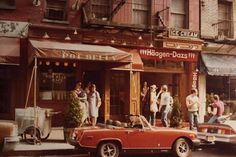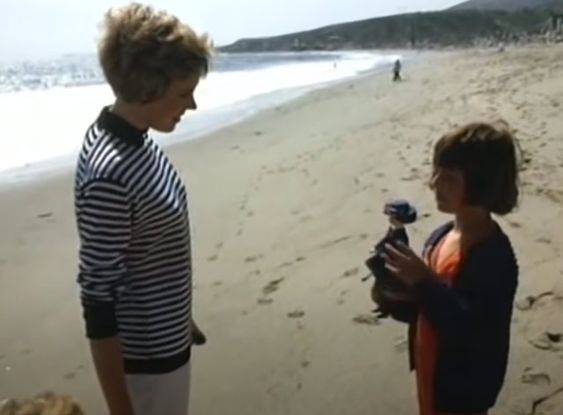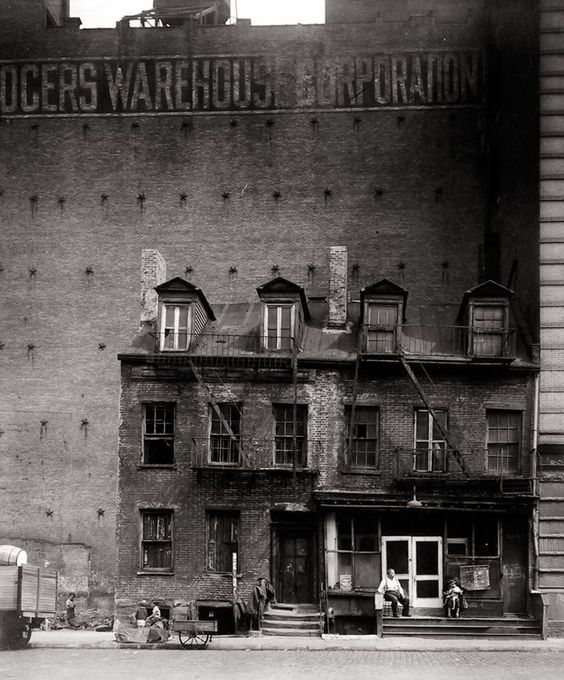A Tale of a Changing Neighborhood
 |
| David's Pot Belly in New York City. |
One of the main themes of this blog is that seismic changes in a big city that affect entire neighborhoods can be subtle and almost unnoticeable if you aren't paying attention. Change happens slowly, creeping along as one store goes out of business, a building is replaced, certain groups of people move in or out. The buildings and streets may stay the same, but everything around them and the way they are used can evolve in ways you never expect.
One such neighborhood is the West Village, and specifically the area of Christopher Street around its intersection with Bleecker Street. I noticed the photo above and it caused me to reflect on how changing social patterns give a neighborhood its character. Let's take a then-and-now look at David's Pot Belly at 94 Christopher Street, NYC, from 1979 to the present.
 |
| David's Pot Belly in NYC. |
David's Pot Belly was a classic burger joint that opened in 1971 near the corner of Christopher Street and Bleecker Street. The "David" in the name was David Levine. He quickly opened another David's Pot Belly (people now remember the name as David's Pot Belly Stove, but it's unclear if that was ever its official name even though it seems to have had a stove as its logo) on Hope Street in Providence, Rhode Island. Perhaps Levine's intent was to start a chain or maybe he just liked to split his time between the two cities, who knows. If a chain was his plan, it failed, because both restaurants are long gone and no chain materialized.
However, the two David's Pot Belly restaurants made an impact on the community. Musicians David Byrne, Chris Frantz, and Tina Weymouth, for instance, worked at the Providence David's Pot Belly in the early 1970s. That led (very indirectly) to the founding lineup of the new wave band Talking Heads. Byrne and the others were attending the Rhode Island School of Design (RISD, pronounced by people in the know as "Rizz-dee") at the time. Incidentally, and this is getting way off track, but Byrne, who was really only interested in music at the time, got the job at the Providence Pot Belly after being fired from a hot dog stand for having hairy arms (true story). But, let's get back on track...
I hope you enjoyed this meandering walk down the winding streets of Greenwich Village. The world around them may change, but the streets of New York endure. Please visit some of our other pages in this "the more things change, the more they stay the same" series!
2021
The owner and founder, David Levine, was volatile and ran a tight ship. The waiters and waitresses (mostly waitresses, the guy generally were dishwashers) had to move fast and remain presentable (probably a new experience for kids in the early '70s). A lot of students worked at his restaurants and, despite having Levine yelling at them from time to time, were usually grateful for the work. I know I was grateful for any side job while I was in school. Pot Belly was open late, so, if you wanted a hamburger with bleu cheese and anchovies or French Onion Soup after the bars closed at 1 a.m., you could head there. It was cozy and rustic for NYC, but it had a hip party crowd befitting the neighborhood and the after-hours crowd. There weren't a whole lot of after-hours diners in the '70s and '80s, so people who enjoyed the nightlife at Limelight or Palladium fondly remember the joints that could satisfy that sudden french-fry craving at 3 a.m. These included David's Pot Belly and nearby Florent on Gansevoort Street. There was a Haagen Dazs right next door, which was convenient if your companion had different cravings.
Word is that Levine eventually soured of the restaurant business. Yelling at his employees probably didn't earn him a lot of friends, either. After a bitter divorce during which he lost custody of his child, David Levine became depressed and committed suicide, apparently in the 1990s. That likely led to the demise of David's Pot Belly, if they didn't close earlier. A sad story, but bad things happen in this world. Oh, and just to be clear about this, there apparently is no connection whatsoever between David's Pot Belly and the current Potbelly Sandwich Shop chain. Or, at least none that I could find.
After Pot Belly closed its doors, it was replaced by Havana Alma de Cuba restaurant. That lasted a long time but now apparently, that too has closed. In 2018, it became a victim of rising rental prices, a common story for New York City restaurants. Christopher Street in the '70s and '80s was a center for gay nightlife, but the area has gentrified like so many other formerly fringe Manhattan areas (such as the nearby Meatpacking District) and now gets a lot less foot traffic than it once did. There used to be crowds of leather-clad folks on the street, but that is no longer the case. Even the Haagen Dazs is gone.
The Christopher Street area has gone through a wrenching evolution in the relatively short period of time (for New York) of a few decades. These changes aren't necessarily good or bad, but they are pretty obvious. Unfortunately, nearby Bleecker Street has lost a lot of its 1980s luster as a fashion center. There were dozens of designer stores nearby decades ago (Coach, Mulberry, Tommy Hilfiger, Ralph Lauren, etc.), but they've all gone as well-heeled residents have moved into the neighborhood because of its "vibe." Meanwhile, the artists (other than Hollywood celebrities who these days own many apartments nearby) have left. That, in turn, has brought a new vibe that is much different than what attracted all these new residents in the first place. At last look, the David's Pot Belly site was vacant and for lease, as are several retail locations nearby. Since upper-middle and upper-class residential neighborhoods are among the most stable of all Manhattan areas, the new status quo is likely to remain for a very long time.

















